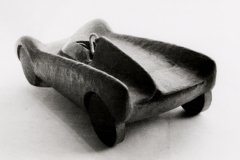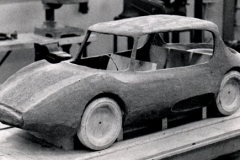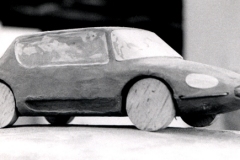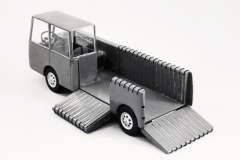.
.
Early Experiments
In addition to Pearce’s early seating projects see >>Home>>Furniture >> Early Seating Projects he engaged in an exploration of Vehicle Design.
Pearce Designed Vehicles
Pearce has an ongoing love affair with automotive design. While a student at the Institute of Design of Illinois Institute of Technology in Chicago c.1957, Pearce undertook a number of automotive design projects under his own initiative. At that time, he had entertained the idea of becoming an automotive designer. However, his design sensibilities were so completely at odds with the U.S. auto industry, at that time, that he saw no possibility of such an option.
Redesigned Volkswagen Beetle
In 1958 Pearce responded to a call to action by Road & Track magazine. The mission was for their readers to re-envision the Beetle with an alternative design proposal. Pearce’s entry was accepted along with the work of three other designers. This was the first time Pearce’s name and work were published. The entry appeared in the February 1958 edition of Road & Track magazine. Because its form was so advanced for 1958 this design would not look out of place in the year 2022.
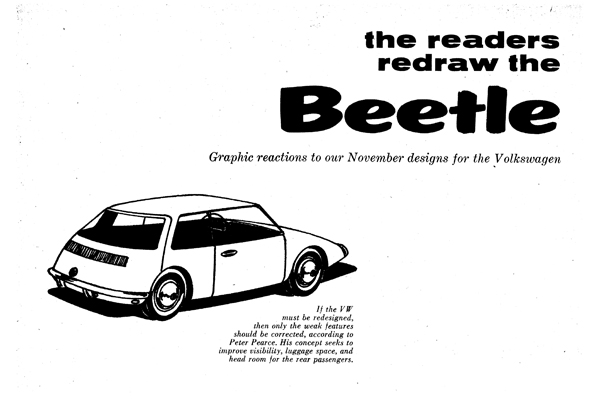
This study was an attempt to push the form of automotive architecture in a more rational performance-oriented direction. At that time American auto design was dominated by out-of-control arbitrary styling that evidenced no regard for refinement of form or efficiency in design and performance. It was a design ethos characterized by physical and visual excess. My VW design was based upon an attempt to improve the performance of the overall design of the vehicle. This included improved aerodynamics, increased interior room, including luggage space, and an enhanced greenhouse for improved visibility, especially out the sides and rear. The revised form was the agent with which to achieve such design objectives. It was designed to be built upon the existing VW platform.
Design Variations: Sedans
Just prior to his entry in Road & Track (1957) Pearce had been working on four other automotive design projects. Two of these projects were explorations related to the Volkswagen design proposal. Both were sedans, one of which was part of his studies at the Institute of Design of Illinois Institute of Technology in Chicago. These projects were carried only as far as sketching models in clay. They were designed around a hypothetical platform using a rear-mounted air-cooled engine of V-4 configuration. They were both larger vehicles than the VW proposal, although these concepts incorporated similar design principles. Like the VW proposal, these vehicles would not look out of place on today’s roads.
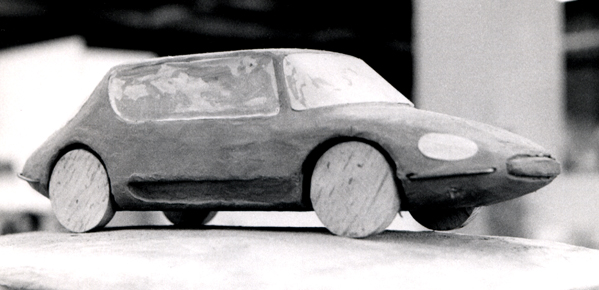
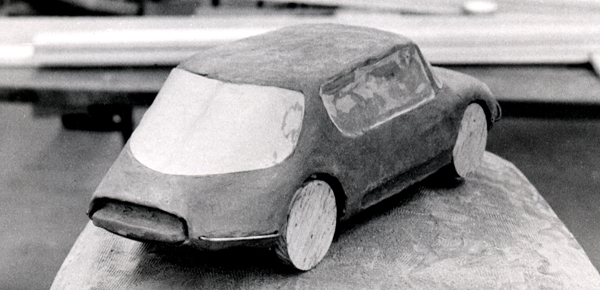
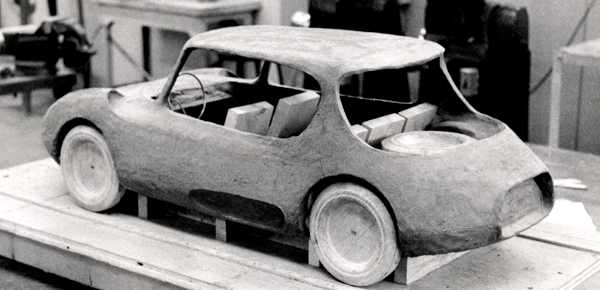

Sports Racing Car
In the mid to late 50s, Pearce was still extremely interested in sports racing cars and attempted to design such a vehicle. Again, this project was only carried to the level of a clay sketch model. This design anticipated the form of sports racing cars that appeared 5 and 10 years later. It was a mid-engine design similar to the Porsche racing cars of the period but incorporated aerodynamic ideas in its form intended to provide high downforce and low drag at the same time.
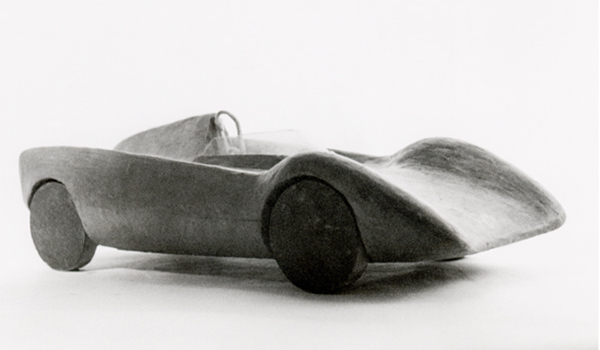
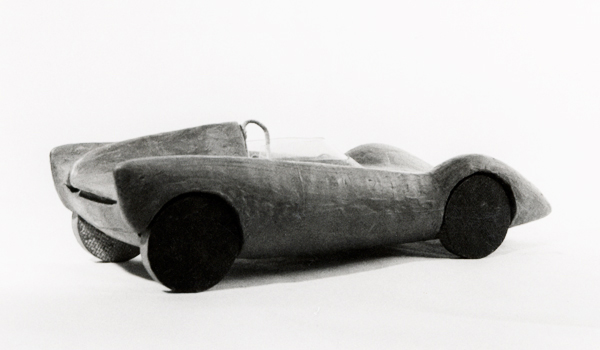
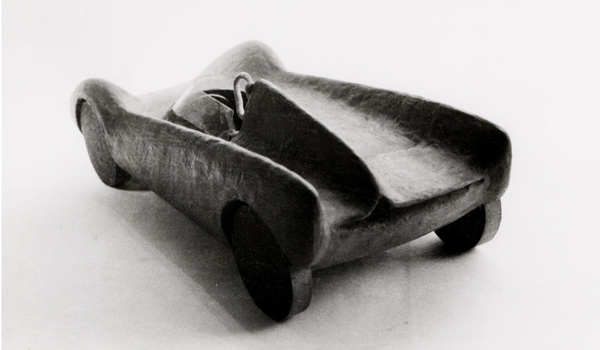

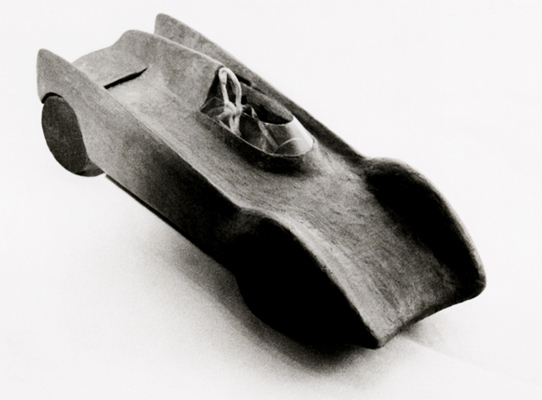
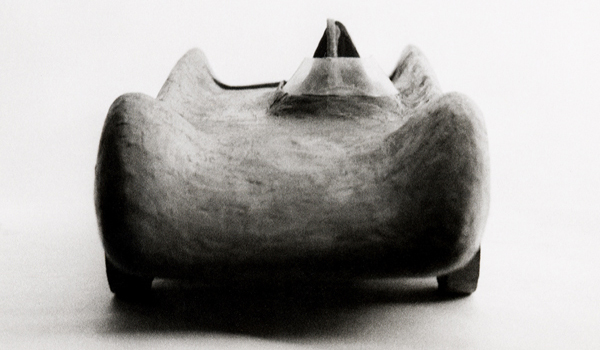
The longitudinal cross-section of the vehicle was in the approximate form of an upside-down and backward wing. This is a principle that anticipated more recent thinking of modern sports racing car design in the late 1990s. Pearce had also explored structural forms of the so-called monocoque type based on the use of laminated composite materials (e.g., fiberglass). Such structural design principles only came into widespread use in racing car design in the late 1960s and early 1970s.
Innovative Pick-Up Truck
The fourth vehicle that Pearce designed (again without school auspices) was an innovative small pick-up truck. This vehicle was based on a front-wheel-drive scheme using the same air-cooled V-4 engine as in the sedan designs. The bed of the truck was designed to facilitate the hauling of long objects such as plumbing pipes, lumber, and other objects not conveniently carried in conventional pick-up trucks. Such a design would likely work well as an all-electric vehicle.
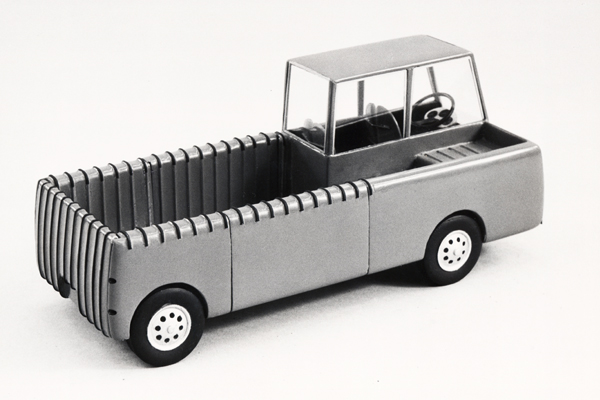
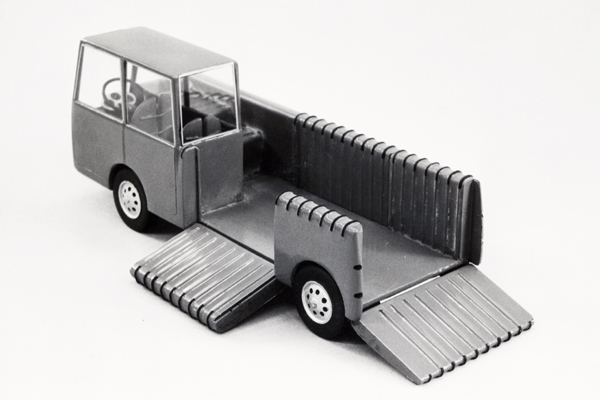
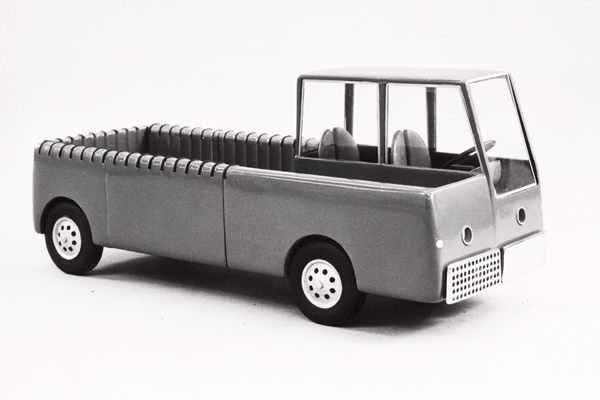
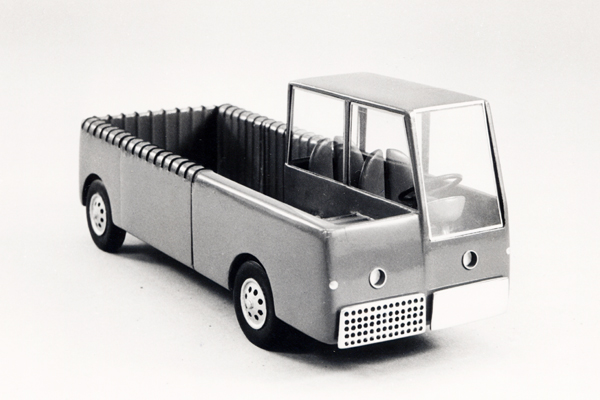
The engine was mounted on the right front, and the driver was located on the left, opposite the engine. A single passenger was accommodated behind the driver. This architecture enabled the truck bed to extend to the full length of the truck on its right side. Another feature facilitated by the front-wheel-drive and the incorporation of independent rear suspension via trailing arms was a very low truck bed from behind the front wheels. This low truck bed enables the payload to be carried at a very low center of gravity markedly improving the handling stability and safety of the vehicle. This low bed also made it much easier to load the truck.
The design of this truck, which dates to 1957, would not look out of date in the present 2001 market. It is still conceptually far more advanced than pick-up trucks currently on the market in the US, which are still based upon a paradigm that dates back to at least the 1930s, prior to the Second World War. Even the chassis engineering of “modern” pick-up trucks (and SUVs) is a little different than their counterparts immediately before and just after World War II. Since this truck design does not project a macho image, it probably would still not be well received in today’s truck market. Perhaps when electric/fuel cell power or other alternative power sources come into widespread use, the viability of such a concept might be recognized.

